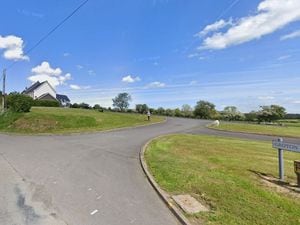County TB cattle death toll hits three-year low
The?number of cattle being slaughtered in Shropshire because of TB has fallen to its lowest in three years, new figures revealed today.
But cases across the country have soared as the disease continues to devastate the farming industry. A total of 28,284 cattle were slaughtered in England last year as a result of bovine tuberculosis, a rise of seven per cent on the previous year, official figures from Defra show.
Meanwhile the total of new incidents in herds rose by five per cent to 3,941.
But in Shropshire, the number of animals being killed fell, from 2,357 to 1,974 during 2012 – the lowest figure since 2009 when 1,251 animals were destroyed.
The county's figure remains high relative to other areas because it is so agriculturally-focused but is well below the biggest hotspot, Devonshire, where 6,535 cattle were killed in 2012.
But the number of new cases in the county increased at a faster rate than in any of the last five years. There were 354 new incidents in Shropshire last year, compared with 304 in 2011, 294 in 2010, and 294 in 2009.
Ministers said the figures showed the growing impact of the disease on dairy and beef farming and highlighted the need to take action.
Farming minister David Heath said: "Bovine TB continues to spread at an unacceptable rate, leading to the slaughter of thousands of cattle and ongoing misery for our dairy farmers.
"What was once confined to a small area of the south west has the potential to become a national crisis and, if left unchecked, could cost the taxpayer £1 billion in the next 10 years. We cannot afford to sit back and let this happen, which is why we are doing everything we can to get on top of this dreadful disease."
The Government has given the green light to two pilot culls of badgers, which can spread the disease to cattle, in Somerset and Gloucestershire this summer.
The controversial plans could see culling rolled out more widely in TB hotspots if methods used for killing badgers in pilot schemes are judged to be effective and humane. But figures also reflect more widespread testing monitoring the disease, with more than 5.8 million tests carried out compared to just under 5.5 million in 2011. Of those 440,026 were in Shropshire.





